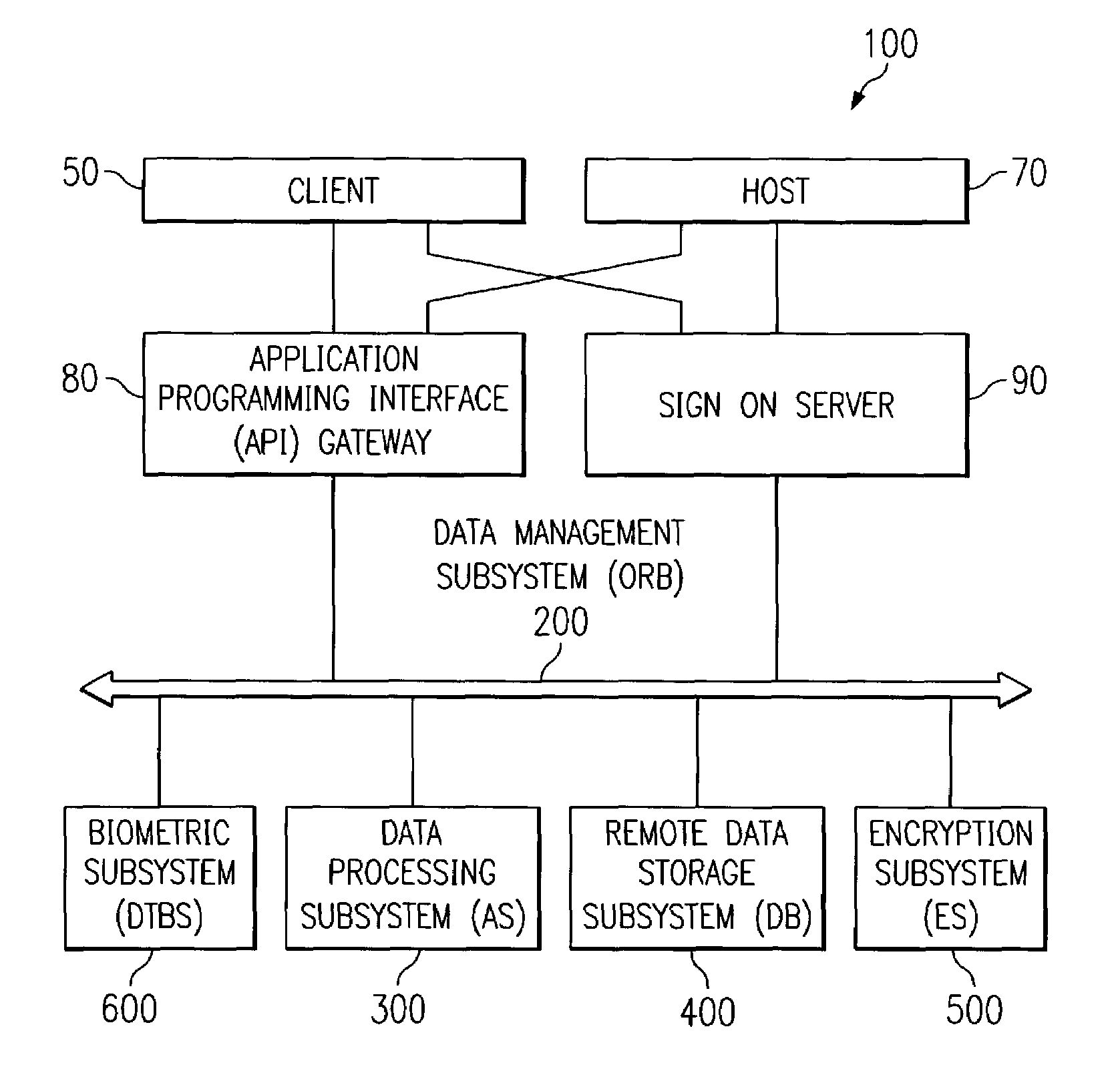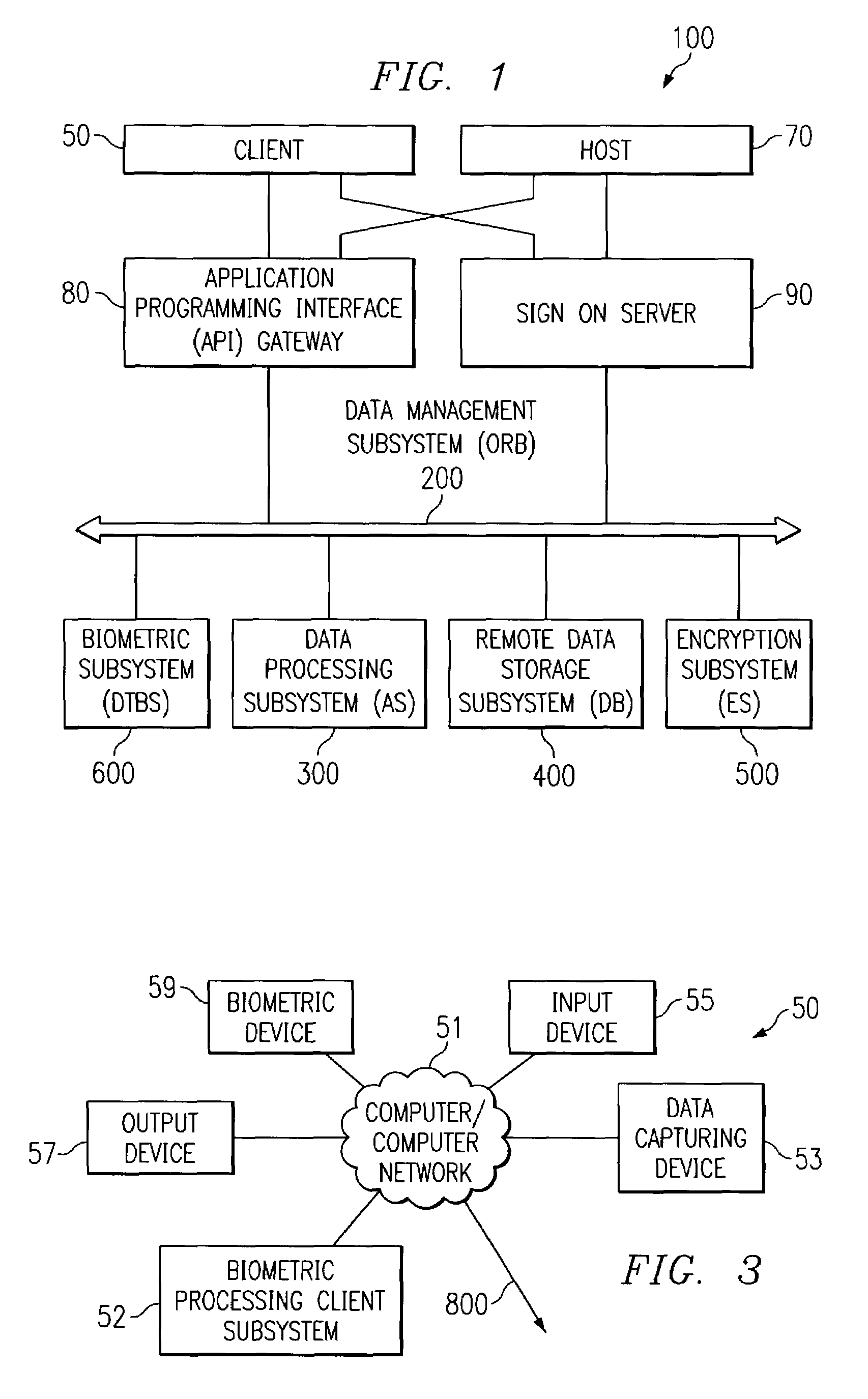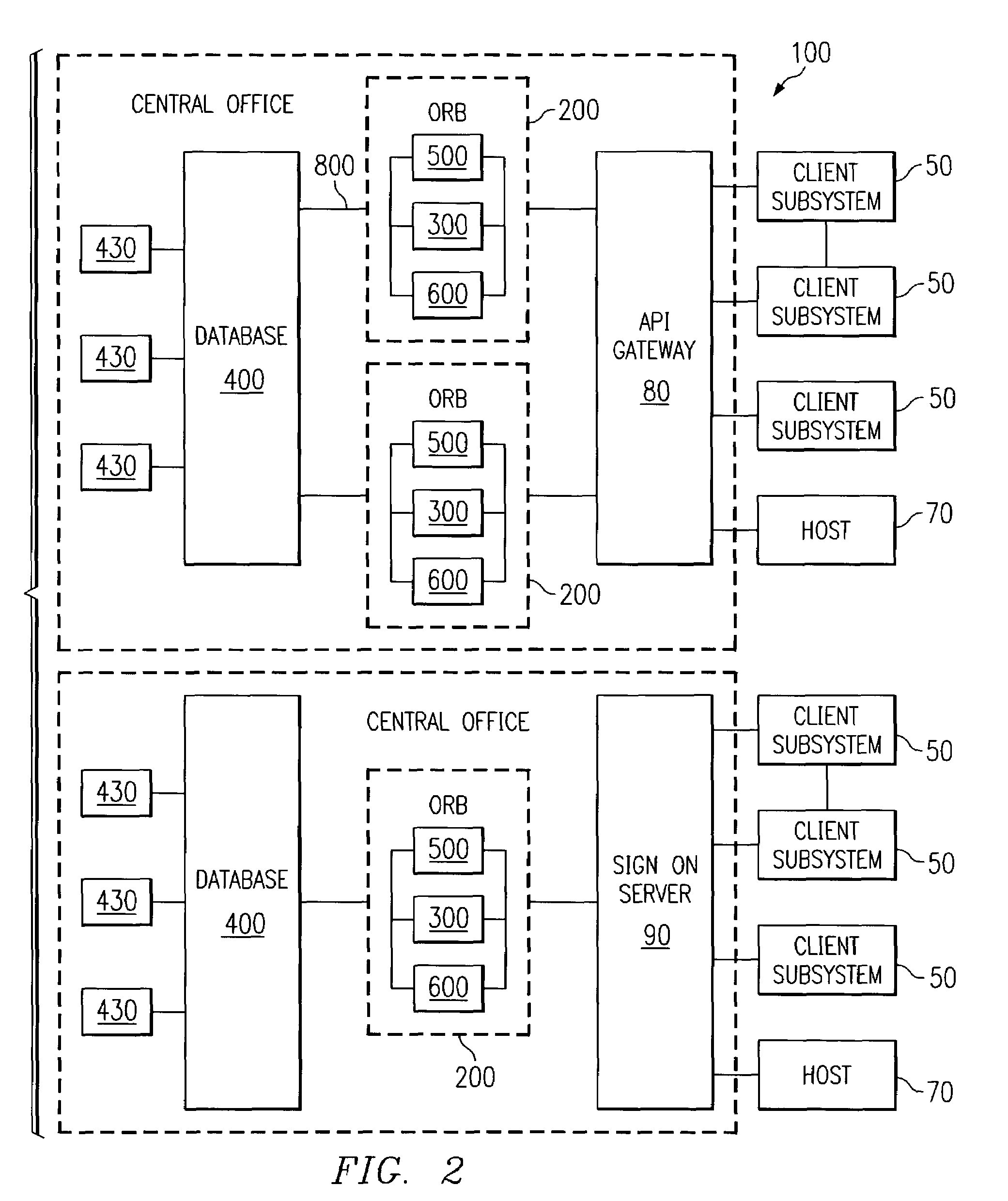Biometrically enabled private secure information repository
a biometric enabled and secure information technology, applied in the private field, can solve the problems of restricting owner, or the very least practicable, and virtually impossible access to all stored information from one source, and limiting the access of information requested by the provider or owner,
- Summary
- Abstract
- Description
- Claims
- Application Information
AI Technical Summary
Benefits of technology
Problems solved by technology
Method used
Image
Examples
Embodiment Construction
[0045]FIG. 1 displays the block diagram of a DataTreasury™ Repository System (DRS) 100, which is connected to either clients 50 or hosts 70 via either an Application Programmable Interface (API) gateway 80 or through a sign on server (SOS) 90. The DataTreasury™ Repository System 100 has five elements: a DataTreasury™ Object Request broker (ORB) 200 (transaction management subsystem), a DataTreasury™ Application Server (AS) 300 (data processing subsystem), a DataTreasury™ Database (DB) 400 (data storage subsystem), DataTreasury™ Encryption Subsystem (ES) 500 (system to ensure security), and a DataTreasury™ Biometric Subsystem (DTBS) 600 (system to process and verify biometrics).
[0046]As shown in FIG. 2, the DataTreasury™ Repository System 100 uses an object oriented programming language for housing any and all types of information across a distributed environment. Data is sent to the ORB 200 via client subsystems 50 and hosts 70. This information is first encapsulated, next, it is co...
PUM
 Login to View More
Login to View More Abstract
Description
Claims
Application Information
 Login to View More
Login to View More - R&D
- Intellectual Property
- Life Sciences
- Materials
- Tech Scout
- Unparalleled Data Quality
- Higher Quality Content
- 60% Fewer Hallucinations
Browse by: Latest US Patents, China's latest patents, Technical Efficacy Thesaurus, Application Domain, Technology Topic, Popular Technical Reports.
© 2025 PatSnap. All rights reserved.Legal|Privacy policy|Modern Slavery Act Transparency Statement|Sitemap|About US| Contact US: help@patsnap.com



